Obesity
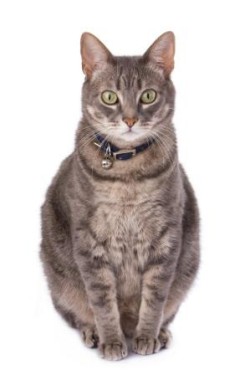 There really isn’t that much to say about overweight dogs and cats that isn’t common sense or advice you’ve already heard. As with overweight people, the solution is eating right and exercising.
There really isn’t that much to say about overweight dogs and cats that isn’t common sense or advice you’ve already heard. As with overweight people, the solution is eating right and exercising.
Obesity is not a trivial problem, however. It can cause heart conditions, diabetes, decreased mobility, circulation problems, and more. And if your pet is already suffering from a disease, obesity will complicate the issue and impede healing. Obesity also decreases mobility and decreases a pet’s lifespan.
One of the worst things you can do to try to get the weight off is to feed your pet one of the “low fat” bagged or canned diets marketed for pet weight loss. These can cause all kinds of other serious deficiencies and illnesses. Dogs and cats need a certain amount of fat in their diet. When fed in proper rations, you will not have a problem with weight control.
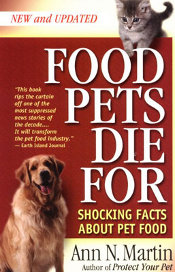 Looking at the label of one of the “good” brands of commercial dog food that is commonly thought to be of high quality and scientifically formulated for ideal nutrition, you’ll see main ingredients such as corn meal, chicken by-product meal, sorghum, soybean mill run 16%, peanut hulls, and corn gluten meal, to name a few. As documented in Ann Martin’s book, Food Pets Die For, these ingredients are not regulated by any sort of FDA like foods for human consumption are. Not only are they not good for your pet, but they are made from the wastes of human food production. The grains are often rancid or diseased. The mill run “foods” are what is swept off of mill floors. Peanut hulls?
Looking at the label of one of the “good” brands of commercial dog food that is commonly thought to be of high quality and scientifically formulated for ideal nutrition, you’ll see main ingredients such as corn meal, chicken by-product meal, sorghum, soybean mill run 16%, peanut hulls, and corn gluten meal, to name a few. As documented in Ann Martin’s book, Food Pets Die For, these ingredients are not regulated by any sort of FDA like foods for human consumption are. Not only are they not good for your pet, but they are made from the wastes of human food production. The grains are often rancid or diseased. The mill run “foods” are what is swept off of mill floors. Peanut hulls?
If you think that’s bad, read more of what Ann Martin and other researchers found was used as the protein sources in these pet foods. It’s disgusting and shocking.
Your dog and cat’s bodies evolved on a diet of natural, raw meats, fats, and other supplements found in the wild. See the Diet section for more information on a natural diet. This is the key to maintaining a proper weight. If you pet is overweight, feed a little less. If underweight, feed a little more. Different pets have different metabolisms.
And the topic of metabolism leads us to the next important facet of weight control. Exercise. For dogs, this is pretty straight forward. Take your dog on walks, hikes, or any other form of exercise. Leaving a dog out in a big back yard is not exercise. Giving your dog a variety of terrains to explore is ideal, but anything you can do is helpful.
 If your dog is not accustomed to exercise, or is ill or overweight, start out slowly. It’s not rocket science. It’s just like getting people into shape. You want to exercise your pets regularly, as opposed to sporadically subjecting them to sudden bursts of intense exercise. If you pet has an illness, consult a holistic veterinarian before starting a new exercise regime.
If your dog is not accustomed to exercise, or is ill or overweight, start out slowly. It’s not rocket science. It’s just like getting people into shape. You want to exercise your pets regularly, as opposed to sporadically subjecting them to sudden bursts of intense exercise. If you pet has an illness, consult a holistic veterinarian before starting a new exercise regime.
A word of caution: beware of parks and lawns that have been sprayed with pesticides. The park, for example, may seem like a great place to exercise and get fresh air, but there may be pesticides sprayed all over that lush, green, weed-free grass. Dogs and cats are more susceptible to this than we are because they are so close to the ground, and they seep up the particles with their feet and ever-sniffing noses.
Some places are required by law to post signs when pesticides have been applied, but many people don’t comply with this. To be safe, try to take your pets to areas that are not at risk. The other day, I took my dog to the local elementary school. There is a large, fenced in grassy play area where locals bring their dogs to let them run off leash, like a make-shift dog park. You would think that children’s play areas would not be sprayed with pesticides, but they can be. I noticed little flags all around the area with a warning saying “Pesticides Applied” but the people still let their dogs run around in all those poisons.
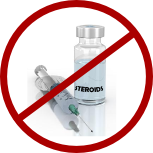 One of the frustrating aspects of this is that the dogs will get reactions – itchiness, redness, et cetera – and the people will just be satisfied with the diagnosis that their dog has allergies. Yeah, most of us are allergic to poison. What’s worse is that if they take their dog to a conventional veterinarian for these allergies, the vet will prescribe cortisone drugs, which can have a crippling effect when used chronically, and which suppress the immune system, leaving the dog susceptible to all sorts of disease.
One of the frustrating aspects of this is that the dogs will get reactions – itchiness, redness, et cetera – and the people will just be satisfied with the diagnosis that their dog has allergies. Yeah, most of us are allergic to poison. What’s worse is that if they take their dog to a conventional veterinarian for these allergies, the vet will prescribe cortisone drugs, which can have a crippling effect when used chronically, and which suppress the immune system, leaving the dog susceptible to all sorts of disease.
It’s true that many pets nowadays have allergies to all kinds of things. This epidemic is due to a number of factors – toxins in the environment, commercial pet foods, and getting too many vaccinations are the key culprits. See the section on allergies for more information. Pets in the wild never used to suffer from these allergic conditions. Regardless, allergies are a common condition we have to deal with in today’s world. Raising your pet on a natural diet is the best safeguard.
Cat Play
Getting an inactive cat to exercise can be difficult. Unlike a dog, most people don’t put their cat in a harness for a walk around the neighborhood. Kittens generally don’t have a problem with exercise. They naturally play and run around chasing all sorts of things. Older cats, though, may need a bit more incentive.
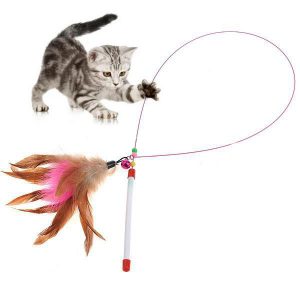 Cats who are in poor health, overweight, or stressed are less inclined to play. While you are encouraging play and exercise, make improving your cat’s diet a priority. Feed a natural, well-balanced, raw diet with supplements. See the diet section for more information.
Cats who are in poor health, overweight, or stressed are less inclined to play. While you are encouraging play and exercise, make improving your cat’s diet a priority. Feed a natural, well-balanced, raw diet with supplements. See the diet section for more information.
The toys that cats like most mimic the behavior of their natural prey, and invoke a hunting reaction. Anything with a feather on the end of a string is pretty tempting as you snake the feather along the floor and up into patterns of flight and landing.
If you have an iPad or tablet, there are apps you can download for cat play. This may be more for our own human enjoyment, watching our cats batting at a computer screen. Games that get your cat chasing things are better for exercise.
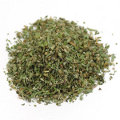 You may want to try catnip to stimulate cat play. Catnip, Nepata Cataria, contains nepetalactone, which acts like a pheromone on the receptors in a cat’s olfactory system. It’s a member of the mint family, and can also help with gassy digestive problems. The frequent use of any mint may weaken its effects, so don’t overuse catnip.
You may want to try catnip to stimulate cat play. Catnip, Nepata Cataria, contains nepetalactone, which acts like a pheromone on the receptors in a cat’s olfactory system. It’s a member of the mint family, and can also help with gassy digestive problems. The frequent use of any mint may weaken its effects, so don’t overuse catnip.
Is Catnip Safe For Cats?
Cats are unique in their response to catnip. The response can be dramatic rolling, leaping, licking, rubbing, drooling, running, and growling. Other cats become mellow and sedate after exposure. Up to thirty percent of the cat population does not respond at all to catnip. In any case, for all of the entertaining behaviors seen, catnip is thought to be nontoxic to cats. If a large quantity of fresh catnip is consumed, you may see some vomiting or diarrhea, but this is rare and self-limiting. If your cat experiences this, limit or withhold catnip.
Underweight
 If your pet is underweight, and in otherwise good health, feed a natural, well-balanced, raw diet as described in the Diet section. If your pet seems to be unusually thin, or has a sudden change in weight, see a holistic veterinarian. Sudden or chronic weight loss can be a symptom of a number of diseases including cancer, dental problems, heart disease, liver disease, pancreatitis, viral infection, worms, and other parasitic conditions.
If your pet is underweight, and in otherwise good health, feed a natural, well-balanced, raw diet as described in the Diet section. If your pet seems to be unusually thin, or has a sudden change in weight, see a holistic veterinarian. Sudden or chronic weight loss can be a symptom of a number of diseases including cancer, dental problems, heart disease, liver disease, pancreatitis, viral infection, worms, and other parasitic conditions.